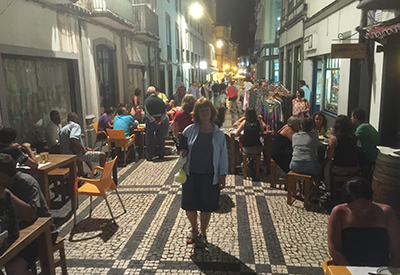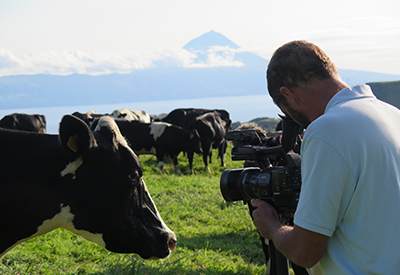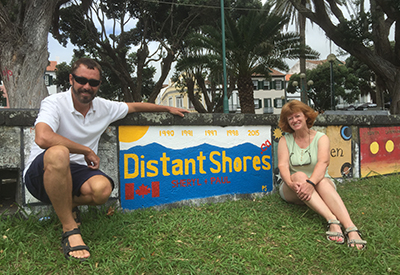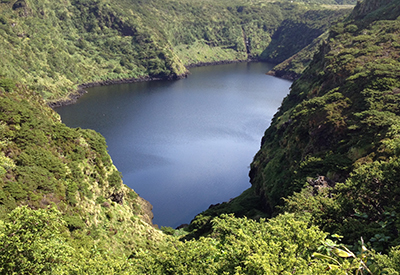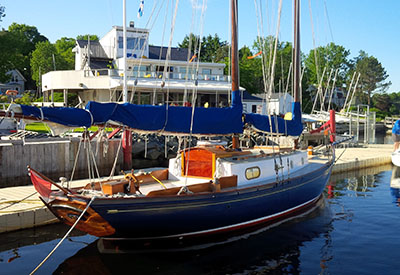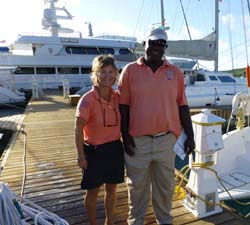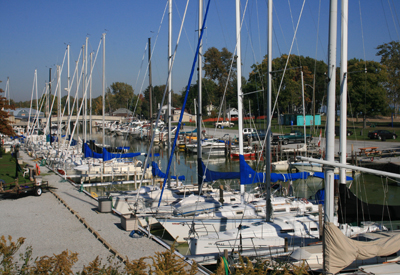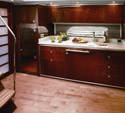Bareboating 101: Part Two – Azores

By Sheryl Shard
Photos by Paul and Sheryl Shard
We had been out on the ocean for 17 days, just the two of us, keeping watch around the clock. One of us was always asleep while the other kept a sharp eye out for ships and floating debris while trimming the sails. Four hours on, four hours off, 24/7.
Fortunately, the winds had been light, making for a slow but comfortable transatlantic passage aboard our Southerly 49 sailboat, Distant Shores II, as we clocked off the miles over sapphire seas sailing from St. Maarten in the Caribbean to the Portuguese islands of the Azores. We’d set sail on May 17th to make the 2,200 nm passage in the company of playful dolphins, soaring shearwaters diving for fish and the occasional curious whale.
For centuries, the nine islands of the Azores, strategically placed in the middle of the Atlantic Ocean, have been a waypoint and rest stop for long-distance sailors from around the world. They are mentioned in countless stories of seafaring adventure from Herman Melville’s classic novel, “Moby Dick”, Joshua Slocam’s autobiography, “Around Alone” to tales of history’s great explorers including Columbus, Vasco de Gama and John Cabot. In 1498, João Fernandes Labrador left the Azorean island of Terceira with John Cabot’s fleet to explore the land that still bears his name. The Azores have also played a part in the history of intercontinental flight. In the early days, these islands were an important mid-Atlantic refueling and provisioning waypoint for pilots, as well as sailors.
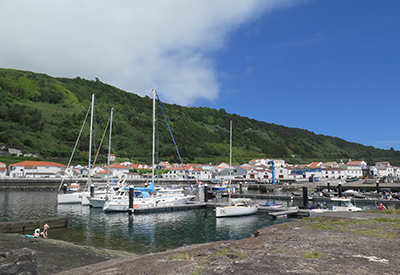 Getting to the Azores has, for many years, been a major endeavour. With international airlines now offering direct, non-stop flights from Toronto, and the development of new marinas and a blossoming charter industry, it’s no longer necessary to spend weeks at sea to get to these remote and enchanting islands to enjoy cruising there.
Getting to the Azores has, for many years, been a major endeavour. With international airlines now offering direct, non-stop flights from Toronto, and the development of new marinas and a blossoming charter industry, it’s no longer necessary to spend weeks at sea to get to these remote and enchanting islands to enjoy cruising there.
Although Paul and I were passage-making on our own boat, part of our mission was to investigate the recently formed charter industry in the Azores along with filming four new episodes for our Distant Shores sailing adventure TV series. (See a sneak peek at canadianyachting.ca.)
This was our fourth return visit and we have made many local friends here over the years. Many Azoreans have family ties to Canada, as well as the US, due to massive emigration in the 1950s and when they learn where you’re from, they often treat you as family.
On June 3rd, two and a half weeks after leaving St. Maarten, we made landfall at the port of Lajes de Flores on the island of Flores, the most western island in the Azores archipelago and the most western point of Europe. The island is actually as close to Newfoundland in Canada as it is to Lisbon, Portugal’s capital city.
The island is aptly named. “Flores” means “flowers” in Portuguese and the island abounds in them. Throughout the Azores, thick blue hydrangea hedges are used to keep the cows in their fields and you can see these pastel flowers from the sea appearing as blue threads stitched across an emerald green quilt. Cows live a good life here – fresh air, surrounded by flowers and an ocean view.  Needless to say, the cheese is good here. In fact, the cheese produced on the island of São Jorge is exported internationally, and each island boasts its own specialty, so sampling is a pleasant activity while visiting here.
Needless to say, the cheese is good here. In fact, the cheese produced on the island of São Jorge is exported internationally, and each island boasts its own specialty, so sampling is a pleasant activity while visiting here.
The climate is also appealing. It’s never too hot, but certainly warm enough for shorts and t-shirts or bathing suits during the day and cool enough at night for great sleeping. It does rain from time to time, hence the abundance of flowers and rich vegetation. You’ll often see mist up at the top of the volcanic peaks or “calderas”, but at sea level you can generally count on sunshine and gentle breezes.
June through September offer perfect temperatures and conditions for cruising due to the zone of high pressure known as the Azores High that settles in producing light winds and calm seas, perfect for novice sailors and family crews wanting to charter here. The Portuguese are very family-oriented and young children are welcome and adored everywhere. The water is pristine for swimming and diving and, with the summer migration of whales through the area, whale watching and dolphin sightings are pretty much guaranteed. Summer brings music and many festivals, too.
“This was our best family vacation ever! Even the kids liked it better than Disney World,” says Canadian sailor, François Gagnon, who did a bareboat charter with Sail Azores, the first and most established charter company in the Azores – now with bases on the island of Faial in Horta Marina and São Jorge out of Velas Marina in the Central Island Group. The third base on São Miguel, the commercial centre of the archipelago, in the Eastern Island Group operates out of the Ponta Delgada Marina.
 Sail Azores is a family-run business started by two sisters and their husbands in 2011. Following much research and planning, they started with one boat for charter, a Dufour 375 Grand’ Large. With their high standards and the international sailing community’s excitement at now being able to charter in this well-known but remote cruising ground (without having to sail across the ocean to get there), their business has grown steadily. They have also had enthusiastic support from the Azores government, who has helped the team add new boats of varying lengths to their fleet every year.
Sail Azores is a family-run business started by two sisters and their husbands in 2011. Following much research and planning, they started with one boat for charter, a Dufour 375 Grand’ Large. With their high standards and the international sailing community’s excitement at now being able to charter in this well-known but remote cruising ground (without having to sail across the ocean to get there), their business has grown steadily. They have also had enthusiastic support from the Azores government, who has helped the team add new boats of varying lengths to their fleet every year.
We met with one of the Sail Azores owners, Nicolau Faria, to get a tour of their boats, just before he was to greet a new group of charterers flying in from the UK. We were genuinely impressed by the immaculate condition of the entire fleet.
“Although you can see from one island to another in the Central Island Group and the conditions are generally good in the summer months, you are in the middle of the Atlantic Ocean in the Azores so all boats are equipped to high standards for safety in offshore waters,” says Faria.
Faria is a working high school geography teacher and people love his friendly yet thorough introduction to the boat they are about to sail in. He really teaches them how to use it and spends whatever time needed to ensure each new group is really comfortable. He has also prepared detailed boat manuals and cruising guides for every boat, all of which are also equipped with a local cell phone so customers can reach someone at the base, if there are any difficulties or questions.
Arriving in Flores, we pulled into the small marina at Lajes do Flores on the south coast and were lucky to get an along-side slip since several boats were leaving to begin the passage to Faial in the Central Island Group. This little marina often fills up in the high season when many sailors migrate across the ocean. If there are no slips, there is a large anchorage in the shelter of the harbour breakwall so you can always drop the hook there, although it can be a little rolly at times.
We found the marina office and were greeted by marina manager, Tiego Pimental, who spoke perfect English, as do all the marina staff we encountered throughout the Azores. We were able to do all clearing-in procedures right there before testing out our lazy land legs by climbing the steep hill up to the town to enjoy a meal and get more Euros from an ATM. Modern banking is another plus to 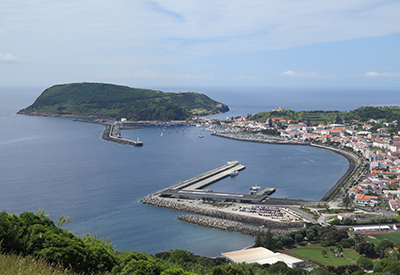 sailing here. The Azores, an autonomous region of Portugal, is part of the European Union. Since the islands are small, there is virtually no crime, another great thing about exploring this area.
sailing here. The Azores, an autonomous region of Portugal, is part of the European Union. Since the islands are small, there is virtually no crime, another great thing about exploring this area.
Over the next couple of days we enjoyed being landlubbers doing outings around the island with taxi driver, Silvio Medina, a favourite among visiting sailors here.
The scenery throughout the Azores is spectacular. The nine islands in this archipelago lie on the mid-Atlantic ridge where three continental plates rub shoulders with one another and so are volcanically formed. In Flores, we visited small lakes which fill the craters of the extinct volcanos there, gazed across the channel at the tiny island of Corvo to the north (there is no safe harbour in Corvo, so fly or take the ferry to see it), felt the splash of many waterfalls and gazed in awe at fascinating rock formations. Silvio also dropped us off at several excellent trails so we could do some hiking on the well-marked island trails, once the only way to get from place to place on Flores.
The Azores is a popular destination for hikers and anyone enjoying peaceful natural settings. There is an official trail network throughout the archipelago that is well maintained and leads you to beautiful and significant points of interest. Since these islands cater to hikers, beautifully restored traditional homes and small spotlessly clean hotels are available if you want some time ashore.
After three delightful days in Flores, we heard a forecast for strong winds from the east that can make the harbour at Lajes do Flores 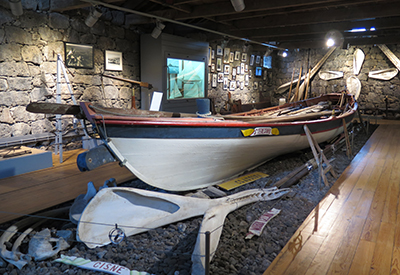 untenable. With strong encouragement from the harbourmaster, everyone left the marina and set sail to the more secure harbour in Horta on the island of Faial in the Central Islands.
untenable. With strong encouragement from the harbourmaster, everyone left the marina and set sail to the more secure harbour in Horta on the island of Faial in the Central Islands.
There are a few small harbours in the Azores where certain weather conditions or wind directions can make them uncomfortable or even untenable but this is well documented in the RCC Pilotage Foundation’s guide, “Atlantic Islands: Azores, Madeira Group, Canary Islands and Cape Verdes” by Anne Hammick published by Imray, which is the sailors’ bible for the mid-Atlantic. (In fact, Anne was in Flores when we arrived, working on updates that are published online.)
We left that afternoon making the overnight passage of 135nm to Faial in the Central Island Group along with 20 or so other cruising boats flying the flags of Canada, the US, France, the Netherlands, Belgium, Norway, Sweden, Denmark, the UK and Ireland who cast off the docklines and made a bee line for the famous harbour of Horta. Faial was to be our base for the summer months from which we explored and enjoyed the unique personality of each island from west to east.
Bareboating has come to the Azores and sailing itineraries to suit all levels and schedules can be found in these charming islands. Once only accessible to highly experienced sailors, anyone can enjoy the magical cruising ground of the Azores now while getting a taste of Atlantic offshore sailing.
Paul and Sheryl Shard have been cruising internationally since 1989. They did their first transatlantic crossing to the Azores in 1990, 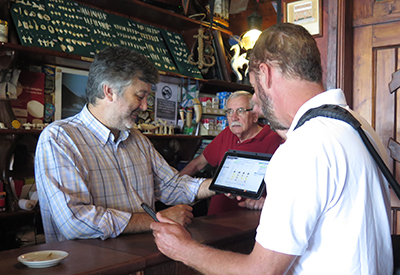 returning in 1991, 1997, 1998 and 2015. The Shards are award-winning travel documentary filmmakers and the fun-loving hosts of the Distant Shores sailing adventure TV series. Watch video excerpts from the series at canadianyachitng.ca. www.distantshores.ca
returning in 1991, 1997, 1998 and 2015. The Shards are award-winning travel documentary filmmakers and the fun-loving hosts of the Distant Shores sailing adventure TV series. Watch video excerpts from the series at canadianyachitng.ca. www.distantshores.ca
FAST FACTS
Sail Azores Yacht Charter: sailazores.pt
Sea & Sail Azores Yachting Charter: seasailazores.com
GoldenSail Azores Yacht Charters: goldensailazores.com
Marinas of the Azores: marinasazores.com
Peter’s Café Sport: petercafesport.com
Mid Atlantic Yacht Services: midatlanticyachtservices.com
Azores Tourist Board: visitazores.com
Hiking in the Azores: trails.visitazores.com
Azores Triangle: triangletheazores.com
RCC Pilotage Foundation Publications – “Atlantic Islands: Azores, Madeira Group, Canary Islands and Cape Verdes” by Anne Hammick • rccpf.org.uk/publications/north-atlantic/atlantic-islands
{videobox}nMkx4LcZZ9g{/videobox}
Photo Captions: Photo 1 – There are many picturesque lighthouses throughout the Azores. This one at Ponta do Arnel is located on the northeast corner of São Miguel, the largest island in the Azores.
Photo 1 – There are many picturesque lighthouses throughout the Azores. This one at Ponta do Arnel is located on the northeast corner of São Miguel, the largest island in the Azores.
Photo 2 – The smallest marina in the Azores is at Lajes do Pico on the island of Pico. It is often hard to find a spot there without calling ahead plus it has a tricky entrance. It cannot be entered in the dark. Many sailors leave their boats at Horta Marina on Faial and make the 15-minute ferry ride over to explore the island of Pico.
Photo 3 – One of the most popular attractions in the Azores is Lagoa Verde (Green Lake) and Lagoa (Blue Lake) located at Sete Ciadades on the main island of São Miguel.
Photo 4 – The Azores are a popular destination for nature lovers, sailors and hikers. Many traditional Azorean buildings have been beautifully restored and turned into guest cottages such as this old mill in Fajã Grande, Flores, the Moinha da Cascada, meaning waterfall mill which rents for 80 euros per night ($120 CAD). If you or someone on your crew feels like some time ashore there are some lovely affordable options.
Photo 5 – The crossroads of the Atlantic. For centuries sailors crossing the Atlantic have made Horta on the island of Faial a waypoint and rest stop. It is now an important commercial port and sports a modern marina that is continually expanding. There is a safe anchorage behind the breakwall here too.
Photo 6 – The Azores has a long seafaring and whaling heritage. Whaling is no longer practiced and has been replaced by whale watching. Lajes do Pico was the centre of whaling life in the Azores and here is a fascinating museum explaining how it helped the 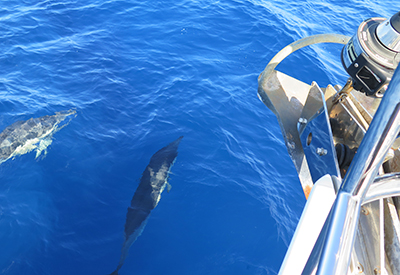 communities in the Azores survive.
communities in the Azores survive.
Photo 7 – For three generations the Azevedo family have been welcoming visiting sailors at the Cafe Sport. They hold mail, exchange money, provide weather information and generally help out where they can. Here José Henrique Azevedo helps Paul check for an incoming package.
Photo 8 – Love the water and can’t get enough of it? Canyoning is a popular new watersport in São Jorge where there are lots of enticing water courses from beginner to advanced. Paul tries it out for the first time and is hooked on climbing down waterfalls now.
Photo 9 – The Azores are rich in marine life and many whales and dolphins can be seen as you sail between the islands. Here the Shards see Risso’s Dolphins sailing from Faial to the island of São Jorge in the Central Island Group.
Photo 10 – The main town of Ponta Delgada has quaint old streets that become pedestrian only at night. This is the most touristic town and commercial centre of the Azores but it is lovely all the same. Interesting shops and good restaurants can be found here.
Photo 11 – Of all the islands of the Azores, São Jorge is the most famous producer of cheese. The Shards meet the producers. Cows are not kept in barns but stay outdoors all year long and have stress-free healthy lives.
Photo 12 & 13 – No one knows how it began but it is a tradition for all visiting boats to Horta to paint their story or logo on the breakwall in Horta Marina. The marina walls are covered with whimsical paintings which fade over time and new ones painted on top. It is an ever-changing nautical art gallery.
Photo 14 – There are many small freshwater lakes in Flores where rainwater has filled the craters of dormant volcanoes.
